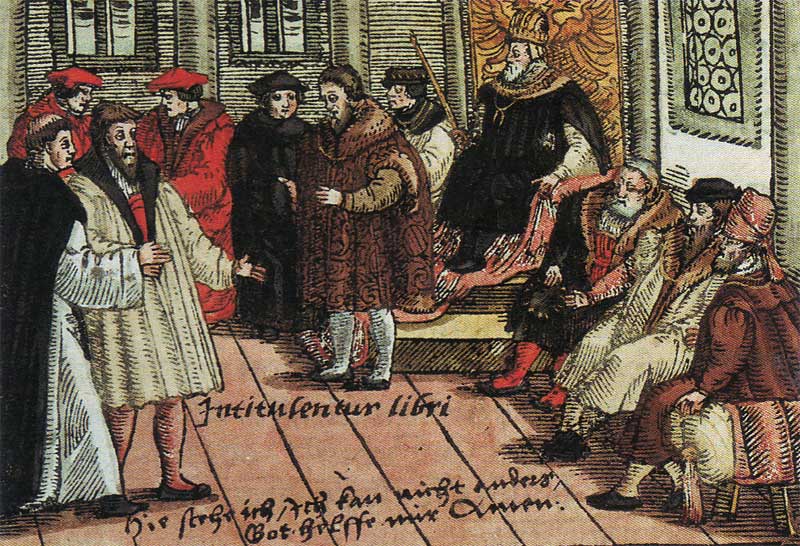
December 5, 2014, by Harry Cocks
The Reformations in England: the Anglo-German Context
Historians used to talk about “the English Reformation,” treating it as a moment in time. After Henry VIII’s break with Rome was solidified with the Act of Supremacy in 1534, it used to be argued, England became gradually more Protestant, until by the reign of James I a Calvinist consensus existed, at least inside the Church of England. More recently, as David Gehring of Nottingham History has shown in an article for The Historical Journal (see link below), historians have spoken of the “Reformations in England.” This coinage aims to demonstrate that the Reformation was a very gradual and often halting process, moving from an early Lutheran stage under Henry VIII, through an eclectic Elizabethan compromise, and on to a more godly form of Calvinism by the time of James I, a situation which was in turn reversed by the changes wrought during the 1630s by Charles I and his Archbishop of Canterbury, William Laud.
Dr Gehring, who has recently been appointed to a lectureship in Nottingham’s History Department, surveys a huge variety of scholarship in English and German going back to the nineteenth century in order to show that the early Anglo-German links and “Lutheranism” of Henry’s reign were not necessarily eclipsed under later monarchs. He also suggests that there were many additional points of contact under Elizabeth between English and German Protestants and that an understanding of the mainland European context is required to appreciate the Reformations as process of several stages.
Dr Gehring shows that the older scholarly view that Lutheranism was imported from Germany under Henry and then rejected under Edward, Elizabeth, and James is in need of revision. He notes that since 2002, a number of studies have shown the important connections and affinities that existed between the English and Lutheran Reformations. Not least of those was the fact that at least half of the Thirty-Nine Articles of Religion were heavily indebted to the Lutheran Confession of Augsburg, the Württemberg Confession, or other Lutheran documents. Luther’s writings were also popular among Elizabethan Protestants, though most of the latters’ writings were broadly Protestant in tone, attacking “popish” practices while avoiding more controversial details in Luther’s theology, particularly his continued attachment to the Real Presence in the Eucharist. Elizabeth I also attempted to forge a Protestant league with German princes in the 1570s despite the apparent balkanisation of European Protestantism in that period, while her own eclectic theology belongs in a quasi-Lutheran or pan-Protestant tradition rather than a Calvinist one. Dr Gehring’s article demonstrates that Anglo-German relations were a vital component of England’s Reformations.
“From the Strange Death to the Odd Afterlife of Lutheran England”, Historical Journal 57, 3 (September 2014), pp. 825 – 844
http://journals.cambridge.org/abstract_S0018246X13000599
Image top right: Luther at the Diet of Worms (Holzschnitt, 1557)
No comments yet, fill out a comment to be the first

Leave a Reply